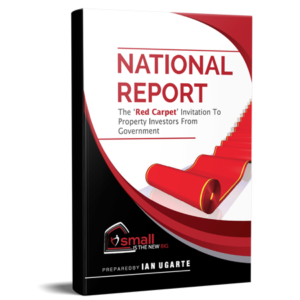Property hotspots are clickbait for the property press, and in my mind, they’re a myth that will ultimately leave buyers out of pocket. In my recent article for nestegg.com.au I reveal why ‘warm spots’ are far more important, and how you can identify them.
5 tips to unearth the next property hotspots
By Maja Garaca Djurdjevic, nestegg.com.au, February 22, 2021
A property expert has bullishly claimed that property hotspots are a “complete myth” that almost guarantees buyers will pay ‘top dollar’ and has instead urged buyers to seek out the “warm spots”.
Housing affordability expert Ian Ugarte has advised buyers to approach the term “hotspot” with care, particularly in the current market.
“By the time a suburb or region has been declared a ‘hotspot’, demand is already very high and only likely to grow as more buyers’ dollars are drawn to the area, fearful of missing out,” Mr Ugarte said.
“It’s like putting money on a horse that’s just won the race. The time for windfalls has past – that horse has bolted, and FOMO will guarantee you’ve paid a higher price.”

According to Mr Ugarte, property buyers need to pay more attention to market intelligence to help identify suburbs that are yet to be discovered – the warm spot.
“Warm spots are those areas, often surrounding the so-called ‘hotspots’, that are cold, but starting to show signs of being more desirable places to live, with listings experiencing fewer days on market and median house prices trending upward,” he said.
“Whatever you do, just know that as soon as the taxi driver and the dentist tell you to buy in an area, it’s already too late.”
To unearth these “warm spots”, Mr Ugarte urged buyers to follow these five tips:
- Research median-price heat maps: Research median-price heat maps in the area of interest. To do this, just Google “property heat maps + [suburb]” and look at the images it produces. You’re looking for the “cold” patches of median prices that are surrounded by much “hotter” suburbs with higher median prices.
- Research days on market: Use tools on various real estate sites to assess the days on market for a property. Domain shows recent historical data for the previous 12 months, so if it’s fallen from >100 to <100, it’s time to start looking.
- Research federal and state infrastructure projects nearby: Research federal and state infrastructure projects in that area to signpost increased demand.
- Avoid greenfield estates: Recognise that greenfield estates will never be in a hotspot.
- Only consider established areas: Buy in an already established area/densified area.





